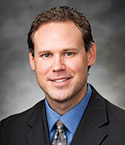September 2022
Industry Pioneers
Industry Pioneers: The people that have advanced the HPI for more than 150 yr
Carl von Linde was a German scientist and engineer who pioneered new technologies in refrigeration and the invention of air separation and gas liquefaction processes. In the 1870s, Linde’s studies led to an efficient design for refrigeration.
This is a preview of our premium content. Thank you for your interest—please log in or subscribe to read the full article.








Comments